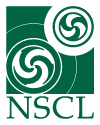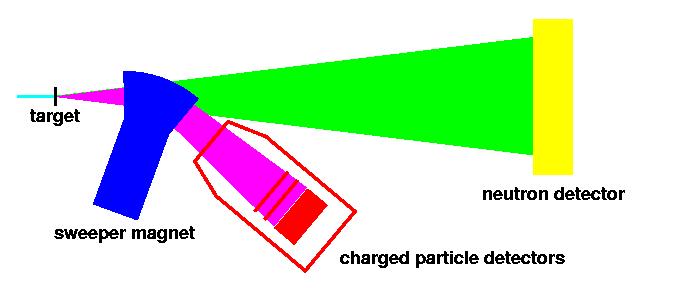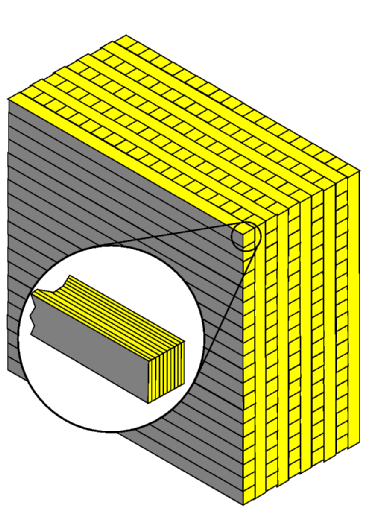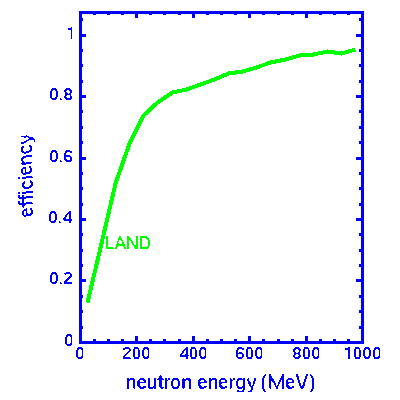

|
National Superconducting Cyclotron
Laboratory
| NSCL |
The Sweeper Magnet is a 4 Tesla dipole magnet and a new development that will be ready after the cyclotron upgrade is completed. Many experiments involve neutron-rich, weakly bound nuclei, and often the final states will be neutron-unbound. To measure these states it is necessary to detect the decay products, i.e. a charged particle in coincidence with a fast neutron, both typically emitted close to the beam axis. The purpose of the sweeper magnet is to deflect the charged fragments from the axis to a shielded location at larger angles, where the charged particles are stopped or detected. For the detection of the charged particles, the focal plane detector or the S800 spectrograph can be used. The neutrons will be detected under zero degree further down the beam axis. The coupled cyclotron in combination with the A1900 beam analysis system will be able to deliver very neutron rich beams at energies up to 200 MeV per nucleon.
The existing neutron walls have a deficiency in detection efficiency for neutrons of higher energies. A detection efficiency of 20% is only reached for neutrons of 50 MeV, it drops to only 12% for neutrons of 100 MeV or more. This limits their use to low energy beams and low multiplicity experiments.

The LAND detector at GSI, Germany, gives a good example of a large area neutron detector that utilizes a combination of plastic scintillator and passive iron converter.
The LAND detector covers an area of 2 m by 2 m. It consists of 200 paddles that are 2 m long, and 10 cm by 10 cm in cross section. Each paddle is a sandwich of 5 mm thick iron sheets and 5 mm thick scintillator, alternatingly stacked (see left figure below). One photo-multiplier tube is fitted on each end of each paddle, enabling the determination of the neutron interaction position through the time difference of the signals.

|

|
To investigate this question extensive simulations using the detector description and simulation tool GEANT were performed.
Experimental data for the neutron detection efficiency of an iron-plastic combination are scarce, especially regarding neutron energies between 50 and 250 MeV. In order to verify the above mentioned simulations, a test experiment is being undertaken at the RIKEN accelerator facility in Tokyo, Japan. The RIKEN laboratory has a neutron detector consisting of 6 by 6 by 108 cm3 blocks of plastic scintillator. Six of these blocks are being used for a relative measurement of the detection efficiency of a pure plastic detector and a detector equipped with 3 cm of iron converter.
| Last modified: Thu Mar 21 17:41:05 EST 2002 | created by Thomas Baumann |